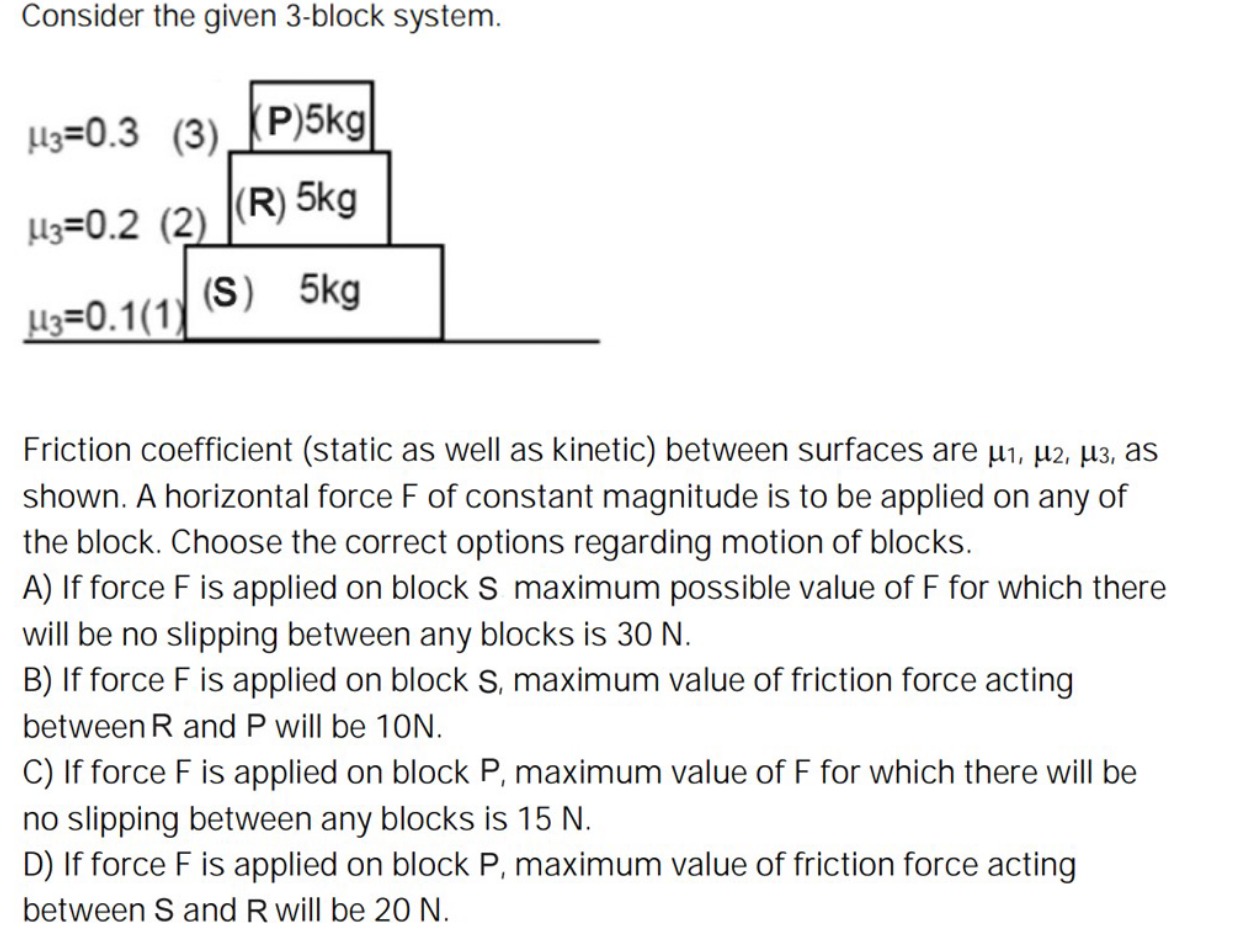Question
Question: Consider the given 3-block system. Friction coefficient (static as well as kinetic) between surface...
Consider the given 3-block system.
Friction coefficient (static as well as kinetic) between surfaces are μ1,μ2,μ3, as shown. A horizontal force F of constant magnitude is to be applied on any of the block. Choose the correct options regarding motion of blocks.

If force F is applied on block S maximum possible value of F for which there will be no slipping between any blocks is 30 N.
If force F is applied on block S, maximum value of friction force acting between R and P will be 10N.
If force F is applied on block P, maximum value of F for which there will be no slipping between any blocks is 15 N.
If force F is applied on block P, maximum value of friction force acting between S and R will be 20 N.
Options A and D
Solution
• When F is applied on S and ground friction is neglected, the strongest limitation comes from the weakest interface between S–R at μ2=0.2.
• Normal at S–R = (mR+mP)g=10g, so f2,max=0.2×10g=19.6≈20 N.
• System mass =15 kg, maximum acceleration amax=f2,max/(mR+mP)=19.6/10=1.96 m/s², so Fmax=15×1.96≈30 N.
• Maximum friction at R–P interface is f3,max=0.3×5g=14.7 N, but the actual friction needed is only 5a=5×1.96=9.8 N. Hence option B is false.
• When F is applied on P, the limiting interface is again S–R giving f2,max=19.6 N, so option D is true. Option C (15 N) is far below the true limit (~30 N).
